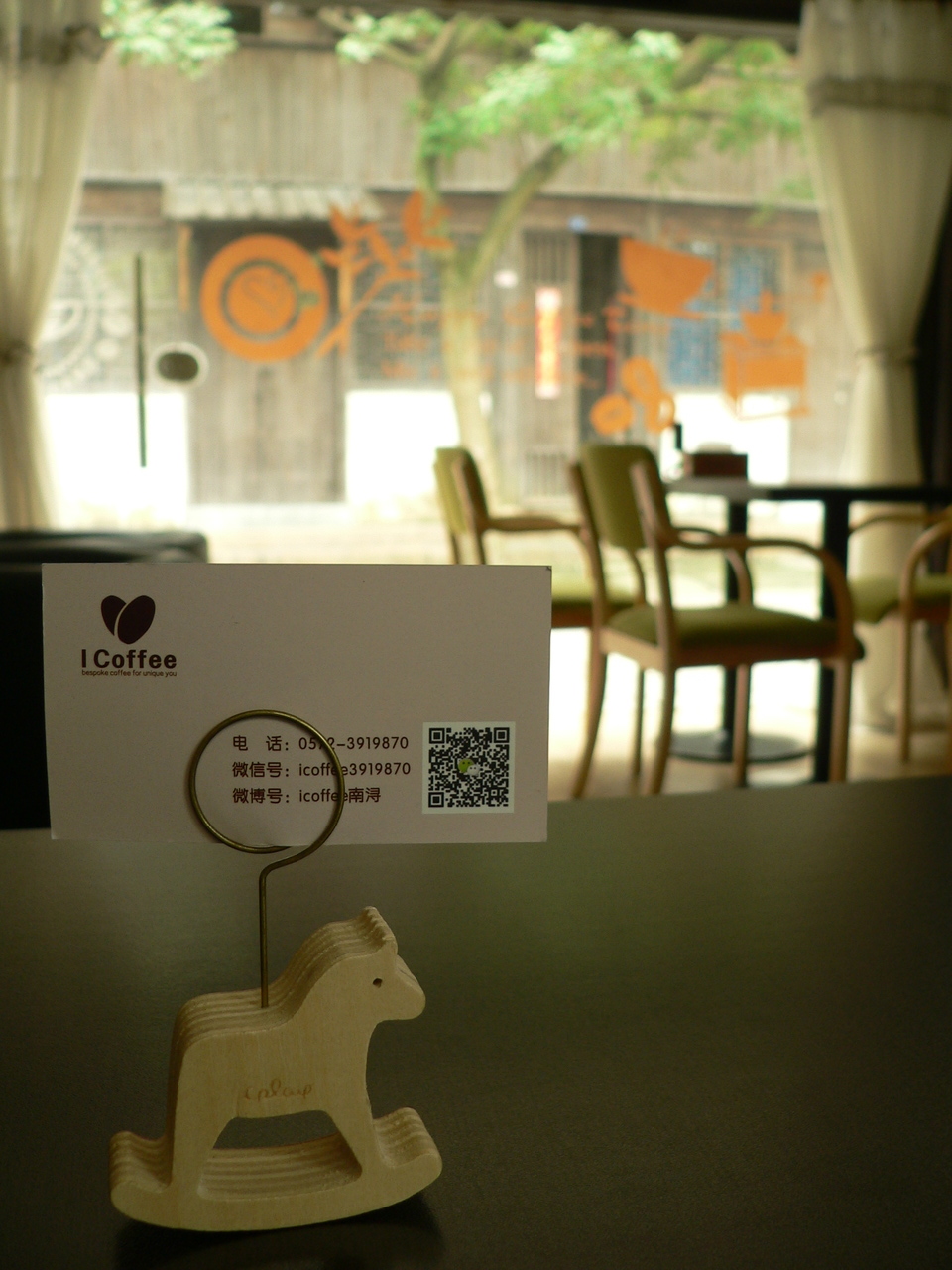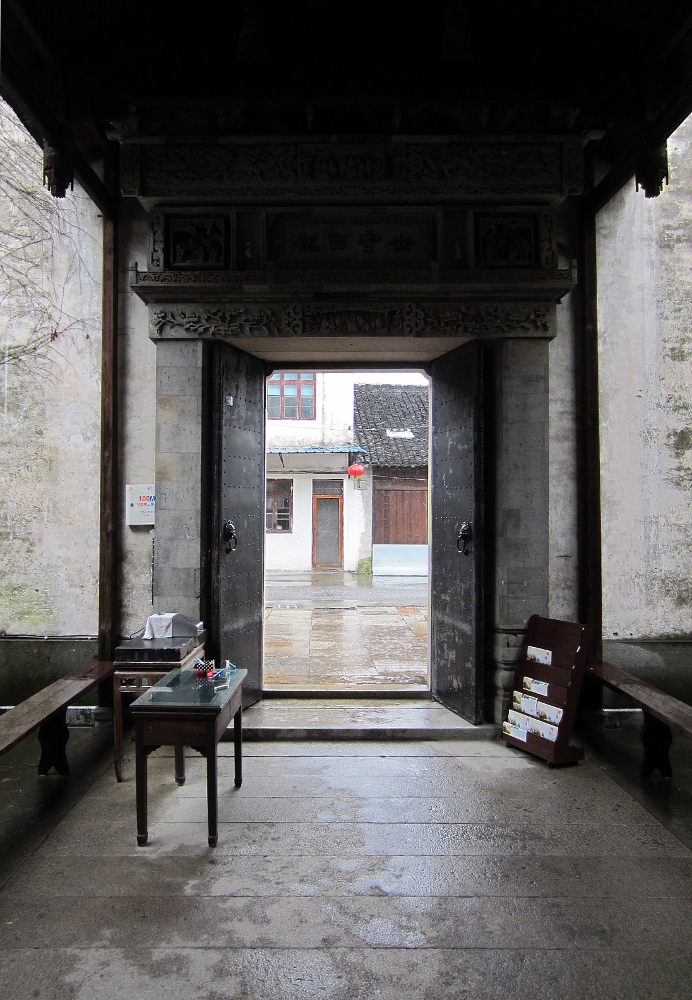My wife and I arrived on a sultry day last July. Cicadas buzzed in the trees and humidity made our skin glisten like the surface of the canals that run through town. After checking in where we were staying, we set out for the exhibits, which are spaced along the canals in historic buildings. First, however, we lunched at a restaurant next to one of the town's many stone bridges that arch over the water.
“Lotus plants waved at us in the breeze, their pink flowers looking like silk memorials to the delicate cloth that made this town.”
There a canal meets the Shi River to form a T. "Shi" means market, indicating the central role of trade in Nanxun's past. If trade was the heart of the town, these waterways were its arteries. Today, visitors ride gondolas on them and dine alfresco on their shores.
Because people still live in the old town area, the buildings are a unique mix of historical exhibits and current residences. Indeed, the six water towns collectively received a 2003 Award of Distinction from UNESCO for their sound conservation of buildings and waterways "while accommodating modern needs and anticipated growth." At the time, the focus on "modern needs" referred to the residents, but today it might apply to tourists as well.
We encountered this modern aspect right after lunch. Since tickets purchased after 3:00 p.m. can also be used the following day, we decided to wait the half hour until then. Opposite the ticket booth stood a riverside building with the sign "iCoffee." What better way to pass the time and escape the midday heat, I thought, than to sip an iced coffee in an air-conditioned café? Never mind that it seemed a bit out of place for a town reproducing the lifestyle of old China.
We entered just as the only other customers left. The café had a mix of seating, from sofas to bar stools. A curved white bookshelf meandered down the length of the space, holding knick-knacks, plants, and reading material—including a Chinese translation of Gone with the Wind. And, of course, befitting its name, iCoffee had Wi-Fi.
 |
| The view from our table at iCoffee. |
During our short visit, we would see half a dozen such cafés, all touting Wi-Fi, in the relatively small historic district. Later I contacted someone from the official town Web site who indicated that this has been a recent trend to cater to more tourists in their 20s and 30s. Ms. Wu (who would only give her family name) said towns like Nanxun have become popular with younger people, many of whom have only experienced life in large modern cities. They wanted today's conveniences, even as they came for Nanxun's small-town charm, its quaint scenes, and its vibrant history.
We began to learn of that history after buying tickets and heading to the Jili Silk Exhibition Hall. The exhibit combined silk samples, old equipment, and photos to present a timeline of the silk industry. Named for the nearby village that produced it, Jili silk was once considered the best in China, clothing emperors and their concubines. Little could they know, profits from this very silk would later play a role in funding the revolution that toppled their empire. Modernized production methods in the 20th century led to Jili's downfall, however, and its lone remaining factory closed a few years ago.
Exhibits closed at 5:00 p.m., so we spent the late afternoon walking along the water taking pictures. We ventured outside the historic area to visit a bookstore and see the newer city district, returning in the early evening to the quieter confines of the canals. As we strolled down a path of paving stones to our inn, bats danced overhead, and through the thin wooden walls of an old building came the telltale clicks and mixing of tiles from a game of mahjong.
The next morning, I awoke to the sound of rain; it soon became a downpour, nixing my plans to go photographing. Instead, we passed the time reading what earlier travelers had written in the guestbooks found on the night stand. Not surprisingly, many wrote poems and paeans to Nanxun's quiet lifestyle. One traveler from Beijing noted the differences between the modern metropolis and the historic village: "The big city is very tiring," he wrote, "while here is very peaceful. Combined, they make for a wonderful life."
Our inn, Liu Yin Lu, was the perfect place to contemplate such things. Furnished with Qing-era antiques, it's located in the northeast section of town called Baijian Lou, which literally means "building of a hundred rooms" and was reportedly built by a Ming dynasty official for his family's servants. Near our room in the back was a small garden, complete with gazebo, swing, and a statue of the Buddha overlooking a fountain. A myna bird said hello ("ni hao") from its cage as we passed. (It knows words in several other dialects besides Mandarin.)
Li Luhua and his wife, Zhou Xiaoping, opened the inn as a bed and breakfast in 2008. (They no longer serve breakfast, and instead give guests a coupon for a free bowl of noodles at a local eatery.) There are nine rooms, but they're tucked away such that we saw only one other, creating a sense of privacy.
 |
| Looking back at the entrance to Zhunde Manor, Zhang Jingjiang's former residence. |
Seeing Ms. Zhou on our way out, my wife asked her about the inn's antiques. I was particularly curious about a boxy chair in our room that was enclosed under the seat: it turned out to be an old-fashioned toilet. And the long, thin drawer built in at the lower right corner? "That's for a pipe, to have a smoke while sitting there," she said, smiling.
When the rain eased, we went out to visit more sites, starting with the former Imperial Wine Workshop, founded in the Song dynasty. Today it sells plum and rice wines, which visitors can sample, though the oldest vintage dates back only fifteen years.
From there we walked the length of the Shi River to Little Lotus Villa, the private garden of silk trader Liu Yong, patriarch of the richest of the "four elephants." The garden is tucked behind private rooms, a courtyard, and the family's ancestral temple. We gravitated to the Water Pavilion, mesmerized by the patter of rain on the pond. Lotus plants waved at us in the breeze, their pink flowers looking like silk memorials to the delicate cloth that made this town.
Other stations ringed the pond, beckoning to visitors. The Jing Xiang Poetry Hall particularly appealed to me. Here the host and his guests would compose poems and couplets while gazing at the water.
IF YOU GO
GETTING THERE:
Buses leave from all major cities nearby, including Shanghai, Hangzhou, Ningbo, Suzhou, and Huzhou.
GETTING IN:
Tickets to the exhibits and old town area of Nanxun cost 100 RMB per person, or about $16 at current exchange rates. There is no cost for children under 120 centimeters (47 inches), and discounts are available for students and senior citizens.
WHERE TO STAY:
Liu Yin Lu is an inn located in the historic Baijian Lou area. Rooms start at $42 per night.
Address: No. 76 East of Baihelou, Nanxun Town, Nanxun District, Huzhou. Phone: 0572-3019772
Time in a Bottle Inn is a modern hotel in the heart of the old town. Rooms with modern decor start at $45 per night; those with antique decor start at $75 per night.
Address: 20 East Street, Nanxun Town, Nanxun District, Huzhou. Phone: 0572-3873133, 0572-3682222 (http://www.nxpzsgkz.com/)
WHERE TO EAT:
[All are in the old town district except for the Qian Weng Hotel, which is just outside it.]
Zhounan Restaurant - Dong (East) Street and Bao Shan Street (by the Tongjin bridge).
Wu Fu Lou Noodle Shop - Xia Tang Dong Street (between the Tongjin and Hongji bridges) | A free breakfast or lunch here is included in the price of a stay at Liu Yin Lu; the owners will give you a ticket good for one bowl of noodles.
Many small restaurants with both indoor and outdoor seating can be found on the paths alongside the Shi River.
Qian Weng Hotel - 18 Yuan Lin Street, Nanxun Town, Nanxun District, Huzhou. Phone: 0572-3912188.











